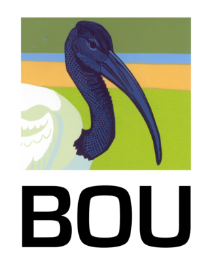
Report from a BOU-funded project
LINKED PAPERS
Diet diversity, individual heterozygosity and habitat heterogeneity influence health parameters in Eurasian Kestrels (Falco tinnunculus). Hochleitner, L., Korpimäki, E, Chakarov, N., Isaksson, C., Nebel, C., Renner, S.C., Vasko, V., Voigt, C.C., Terraube, J., Sumasgutner, P. 2024. IBIS. DOI: 10.1111/ibi.13345. VIEW
Integument colouration and circulating carotenoids in relation to urbanisation in Eurasian kestrels (Falco tinnunculus).. Sumasgutner, P., Nilles, T., Hykollari, A., Merling de Chapa, M., Isaksson, C., Hochleitner, L., Renner, S. & Fusani, L. 2023. The Science of Nature. DOI: 10.1007/s00114-023-01874-5. VIEW
In kestrels, health can literally be written on the face: the bright yellow and orange colours of the Eurasian Kestrel (Falco tinnunculus) come from carotenoids, organic pigments that birds cannot synthesise themselves. Instead, they must be obtained through diet and then allocated to different functions in the body. Carotenoids can boost immune defences and protect against oxidative stress, but they are also used to colour bare skin parts, and in some species, feathers. This sets up a classic trade-off: should carotenoids go into physiology, or into ornaments? Because of this, bright colouration has long been considered an “honest signal” of individual quality (Figure 1). It can only be maintained when an individual is healthy and has sufficient access to nutritious food. That makes carotenoid-based colouration a powerful lens through which to view how environmental change influences bird health.
In two recent studies, my colleagues and I explored what kestrel colouration can tell us about health in landscapes heavily modified by humans: cities and farmland. The results highlight how this charismatic predator can act as a sentinel of ecosystem health in very different human-dominated settings.

Figure 1 Carotenoid pathway in Eurasian Kestrels. In natural habitats, kestrels mainly hunt voles, but in cities, they rely more on avian prey. This shift changes the amount of carotenoids available, which can either be invested in bright skin colouration for signalling or in physiological functions such as immunity; adapted (Pérez-Rodríguez, 2009).
Kestrels in the city
Urbanisation has dramatically reshaped landscapes to meet human needs. Yet many species, even predators, persist in these environments. The Eurasian Kestrel is a prime example. In Vienna, Austria, they breed in large numbers of > 400 breeding pairs, thanks to the abundance of nest sites in historic buildings (Sumasgutner et al., 2014b). While adults can roam between urban and more rural areas, nestlings cannot escape the city. They depend entirely on their parents for food and are exposed to whatever urban environments have installed.
Carotenoids are the raw material to colour their eye ring, cere and legs, but where do they come from? Urban kestrels rarely catch voles, their preferred prey. Instead, they feed more often on small birds (Sumasgutner et al., 2014a). Earlier assumptions suggested this avian-prey-based diet might actually provide more carotenoids, since insect-eating birds can themselves be carotenoid-rich. If so, city nestlings should be brighter.
But that’s not what we found. In our study of 122 nestlings from 21 broods across Vienna, those raised in more urbanised areas showed paler, more bluish facial colouration (Sumasgutner et al., 2018). Blood samples revealed that they also had lower concentrations of circulating carotenoids (Sumasgutner et al., 2023) – so it’s not that they allocate their carotenoids to other functions rather than colouration. Instead, the entire urban food web seems to be carotenoid-poor, starting with plants in city environments that produce fewer carotenoids under pollution and heat stress (Isaksson, 2009). This shortage cascades up through insects, to small birds, and finally to kestrels (Figure 2). Interestingly, paler colouration could not be explained by parasite load or the need to allocate carotenoids to stress responses (Sumasgutner et al., 2018). In this case, honest signalling breaks down not because individuals divert resources elsewhere, but because the “currency” of the signal is in short supply.

Figure 2 Urban kestrels are paler because carotenoids are scarce throughout the city food web. Urban plants produce fewer carotenoids under stress, which cascades through insects and small birds to kestrels, resulting in lower circulating carotenoid levels and duller colouration (Isaksson, 2009).
Kestrels in the countryside
A very different picture emerges in farmland. In western Finland, we studied kestrels breeding in agricultural areas during a year of exceptionally low vole abundance (Hochleitner et al., 2025). Here, the challenge was not carotenoid scarcity per se, but overall food shortage.
We examined how diet diversity, habitat heterogeneity, and individual genetic diversity (heterozygosity) interacted to shape kestrel health. Once again, colouration played a central role. Female kestrels with higher genetic diversity maintained brighter integument colouration, even when specialising on voles during this tough year. They were also less likely to be infected with Haemoproteus parasites. For males, the story differed: those specialising in voles were in better body condition, regardless of their individual genetic heterozygosity. These results underscore that how colouration relates to individual quality might differ between sexes. This is not surprising in a raptor species with very distinct parental roles during chick rearing: males hunt and provision food for both the female and the offspring, while the larger females invest in incubation, brooding, and nest defence, only later contributing directly to prey delivery. These contrasting roles may help explain why male condition and female colouration signal different aspects of quality under food limitation.
At first glance, cities and farmland present very different challenges for kestrels. In urban areas, the food web itself is carotenoid-poor, making colouration uniformly paler. In intensively farmed areas, food shortages expose individual differences: genetic diversity, diet specialisation, and sex all influence whether bright colouration can be maintained.
Yet the two studies point to a shared message: Carotenoid-based colouration is more than just decoration. It reflects the complex interplay of diet, genetics, health, and environment. In human-dominated landscapes, it can reveal how land-use change reshapes food webs, constrains signalling systems, and ultimately affects predator health.
Kestrels are common and charismatic, often nesting right above our heads on buildings or hover hunting visibly over fields and along roadside verges. Their conspicuous colours are not just striking for birdwatchers; they are windows into the hidden workings of ecosystems. By “reading” these colours, ecologists can trace the ripple effects of human activities, from urban pollution altering plant chemistry to agricultural intensification disrupting prey availability and quality. Kestrels, as top predators, integrate these effects across trophic levels. That makes them powerful sentinels for monitoring how land use influences ecosystem health.
For me, this is what makes working on urban and farmland raptors so exciting. They connect big ecological processes to individual health in ways we can literally see. When kestrels turn pale, they are telling us something important about the environments we share.
Funding
In 2021, Petra was awarded an Ornithological Research grant of £1,500 for a project titled “Honest signals and circulating carotenoids in an urban top predator (Common Kestrel)” when she was a Postdoctoral Research Fellow at the Konrad Lorenz Research Centre, Austria.
References
Hochleitner, L., Korpimäki, E., Chakarov, N., Isaksson, C., Nebel, C., Renner, S. C., Vasko, V., Voigt, C. C., Terraube, J. & Sumasgutner, P. 2025. Diet diversity, individual heterozygosity and habitat heterogeneity influence health parameters in Eurasian Kestrels (Falco tinnunculus). Ibis, 167: 145-160.
Isaksson, C. 2009. The Chemical Pathway of Carotenoids: From Plants to Birds. Ardea, 97: 125-128.
Pérez-Rodríguez, L. 2009. Carotenoids in evolutionary ecology: re-evaluating the antioxidant role. BioEssays, 31: 1116-1126.
Sumasgutner, P., Adrion, M. & Gamauf, A. 2018. Carotenoid coloration and health status of urban Eurasian kestrels (Falco tinnunculus). PLoS ONE, 13: e0191956.
Sumasgutner, P., Nemeth, E., Tebb, G., Krenn, H. W. & Gamauf, A. 2014a. Hard times in the city – attractive nest sites but insufficient food supply lead to low reproduction rates in a bird of prey. Frontiers in Zoology, 11: 48.
Sumasgutner, P., Nilles, T., Hykollari, A., de Chapa, M. M., Isaksson, C., Hochleitner, L., Renner, S. & Fusani, L. 2023. Integument colouration and circulating carotenoids in relation to urbanisation in Eurasian kestrels (Falco tinnunculus). The Science of Nature, 110.
Sumasgutner, P., Schulze, C. H., Krenn, H. W. & Gamauf, A. 2014b. Conservation related conflicts in the nest-site selection of the Eurasian Kestrel (Falco tinnunculus) and the distribution of its avian prey. Landscape and Urban Planning, 127: 94-103.
Image credit
Top right: © Wiener Wildnis Popp-Hackner Photography
If you want to write about your research in #theBOUblog, then please see here.





